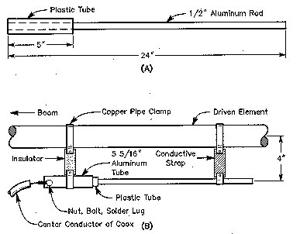Ethernet technology has transformed how we connect and communicate, especially within local area networks (LANs). A critical component of this technology is the unshielded twisted pair (UTP) cables, which are widely used for data transmission. Understanding the voltage specifications associated with these cables is essential for network professionals, engineers, and anyone involved in setting up or maintaining Ethernet networks. This article explores the voltage levels used in Ethernet lines, particularly focusing on UTP cables, while also discussing Power over Ethernet (PoE) technology and different cable categories.

Ethernet is a networking technology that facilitates communication between devices in a LAN. It operates using various cable types, with UTP cables being the most common due to their cost-effectiveness and ease of installation. UTP cables consist of pairs of wires twisted together to reduce electromagnetic interference, making them ideal for high-speed data transmission.
Key Takeaways
- UTP cables are essential for Ethernet networks.
- Understanding voltage specifications is crucial for performance optimization.
Voltage Specifications in Ethernet Lines
The IEEE 802.3-2008 standard provides guidelines for the voltage levels used in Ethernet lines that transmit data over twisted pair cabling. Familiarity with these specifications ensures that network installations meet performance and safety requirements.

Differential Output Voltage
The differential output voltage refers to the voltage difference between two conductors in a pair when no load is connected:
- Specification: ≤ 13 V peak
This specification ensures that devices connected via Ethernet can operate safely without risk of damage from excessive voltage.
Common-Mode Output Voltage
Common-mode voltage refers to the voltage present on both conductors relative to ground:
- AC Common-Mode Output Voltage:
- 30 Hz to 40 kHz: ≤ 2.5 V peak
- Above 40 kHz: ≤ 160 mV peak
This low common-mode voltage helps maintain signal integrity and reduces noise interference.
DC Common-Mode Output Voltage
The DC common-mode output voltage is another important parameter:
- Specification: ≤ 5.5 V
This specification indicates the maximum allowable DC voltage present on both conductors, ensuring compatibility with various network devices.
Key Takeaways
- Differential output voltage is crucial for device safety.
- Common-mode voltages must be kept low to ensure signal integrity.
Understanding Power over Ethernet (PoE)
Power over Ethernet (PoE) technology allows electrical power to be transmitted alongside data over standard Ethernet cabling. This innovation simplifies installations by eliminating the need for separate power supplies for devices like IP cameras and wireless access points.
PoE Voltage Ranges
PoE operates at higher voltages compared to standard Ethernet lines:
- Standard PoE (IEEE 802.3af):
- Voltage Range at PSE Port: 44–57 V DC
- Typical Voltage: 48 V DC
This range allows PoE devices to receive sufficient power while maintaining safety standards.
Comparison of PoE Standards
There are several PoE standards, each with different power delivery capabilities:
| PoE Standard | Maximum Power per Port | Minimum Power per Port | Supported Devices |
|---|---|---|---|
| IEEE 802.3af | 15.4 W | 12.95 W | VoIP phones, cameras |
| IEEE 802.3at | 30 W | 25 W | Wireless access points, PTZ cameras |
| IEEE 802.3bt Type 3 | 60 W | 51 W | High-performance access points |
| IEEE 802.3bt Type 4 | 100 W | 71 W | Laptops, LED lighting |
Each standard builds upon its predecessor, allowing for greater power delivery capabilities and supporting a wider range of devices.
Key Takeaways
- PoE simplifies device installations by providing power through data cables.
- Different PoE standards cater to various device power needs.
Categories of UTP Cables
UTP cables are categorized based on their performance specifications, which determine their suitability for various applications within an Ethernet network.
Performance Specifications
Here’s a comparison of common UTP cable categories:
| Cable Category | Maximum Data Rate | Maximum Distance |
|---|---|---|
| Cat 5 | 100 Mbps | Up to 100 m |
| Cat 5e | 1 Gbps | Up to 100 m |
| Cat 6 | 1 Gbps (100 m), 10 Gbps (50 m) | Up to 100 m |
| Cat 6a | 10 Gbps | Up to 100 m |
Higher category cables support faster speeds and longer distances, making them ideal for modern high-speed networks.
Key Takeaways
- Higher category UTP cables enable faster data transmission.
- Selecting the appropriate cable category is essential for network performance.
Conclusion
In conclusion, understanding the voltage used in Ethernet lines, particularly in UTP cables, is vital for ensuring optimal network performance and safety. Standard Ethernet lines operate at a differential peak voltage of less than 13 V, while Power over Ethernet technology utilizes a range of 44–57 V DC to deliver both data and power effectively. Additionally, selecting the right category of UTP cable can significantly impact speed and distance capabilities within your network infrastructure.
By grasping these fundamental concepts, you can make informed decisions about your networking needs and ensure that your installations are efficient and reliable.


![[Windows 8] How to share Internet connection with your phone, tablet, other computers, and other dev](https://www.800908.com/wp-content/uploads/2021/10/1224-6.png)

